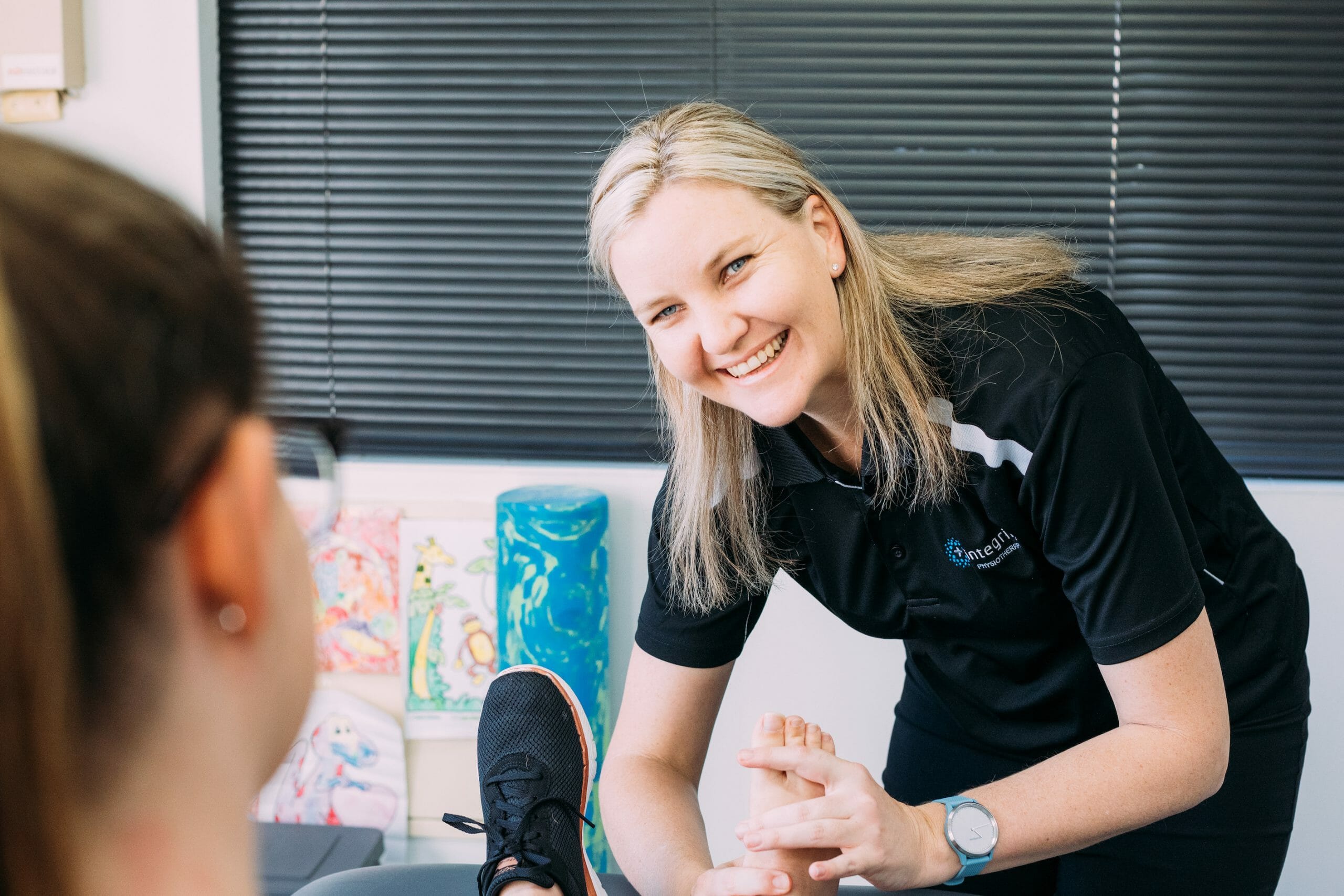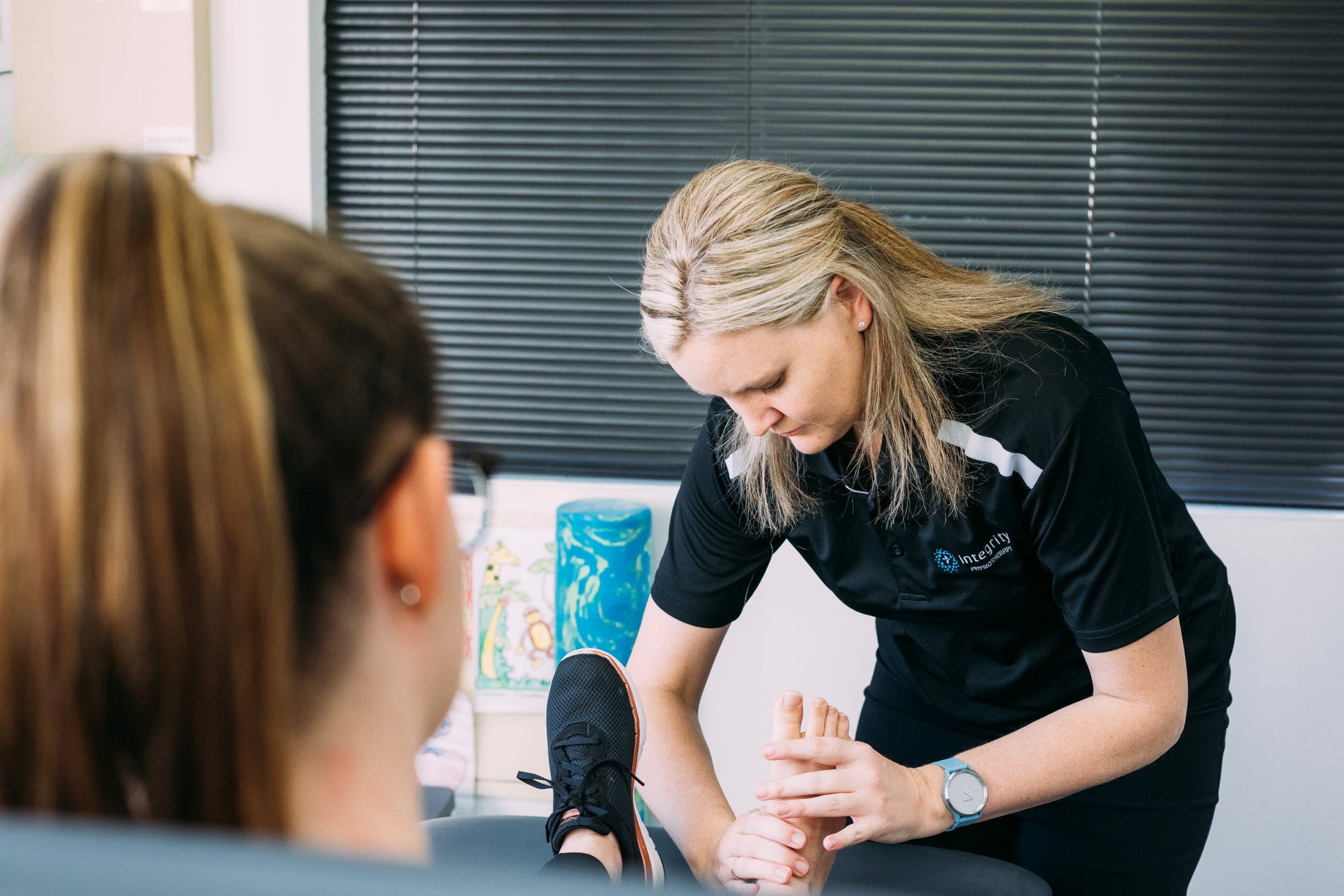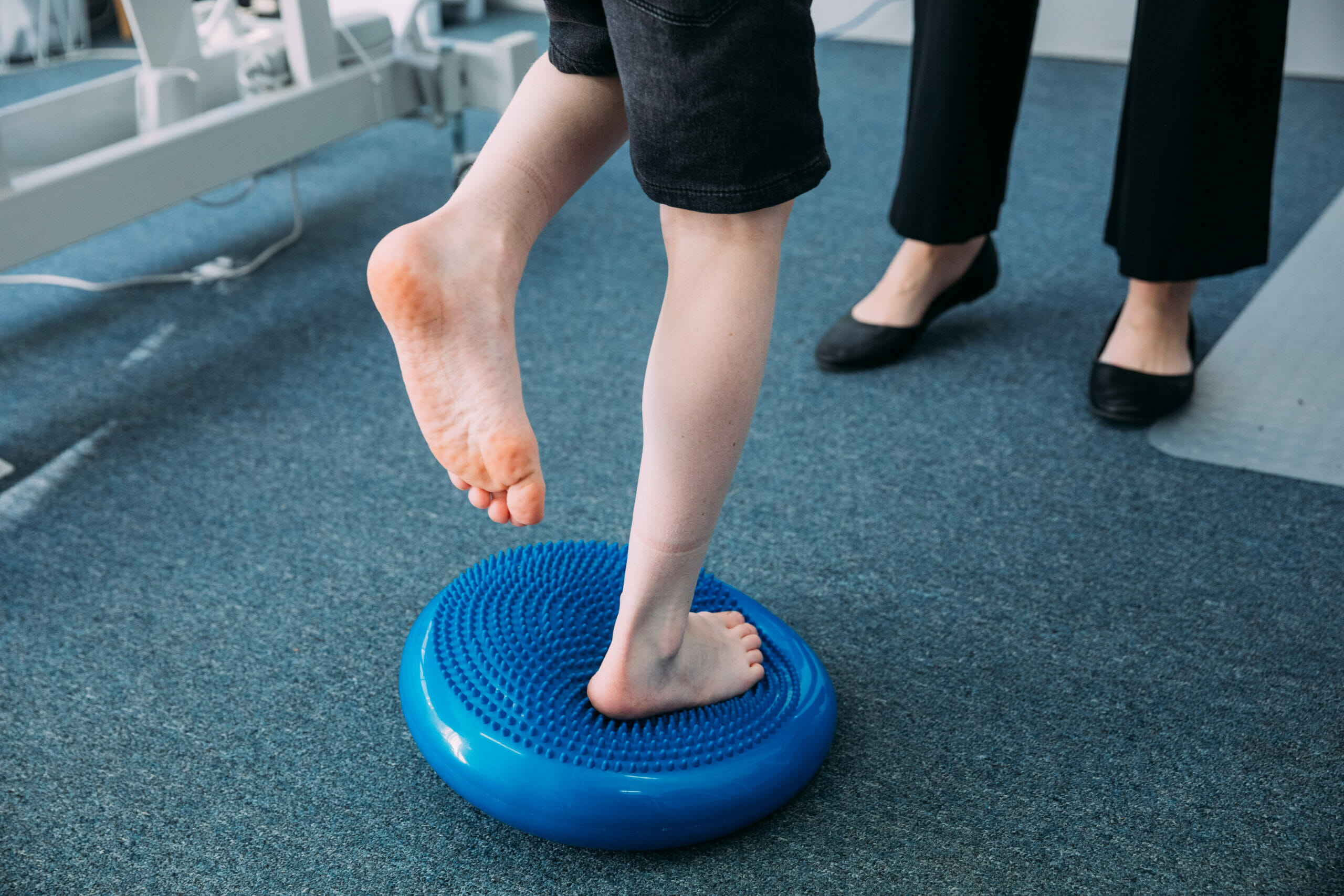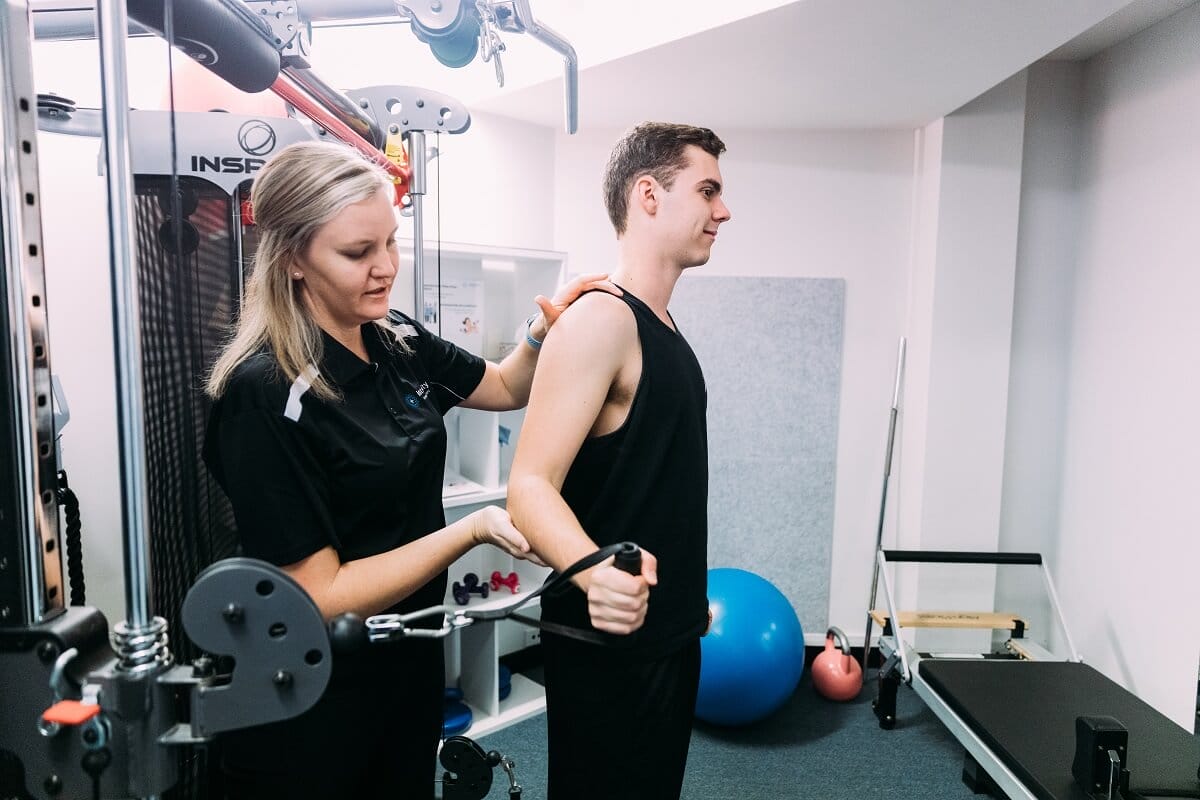
A sprained ankle occurs when one or more of the ligaments in the ankles are torn or overstretched. This injury causes pain, swelling and sometimes walking difficulties. Although a mild sprain may require no more than rest, if your injury is causing more than just slight pain or swelling, it’s important to seek sprained ankle treatment in Perth to ensure proper healing.
Dealing with a bad sprain or sprained ankle that just isn’t getting better? We can help. Our team of experienced physios can get you on the path of recovery – book an appointment today!

The Ankle Joint
The ankle joint is like a hinge between the foot and the lower leg. It allows the foot to bend up and down, as well as provide some rotation. Your ankle is stabilised with its specific bone arrangement and the surrounding ligaments. Ligaments are tough bands of tissue that support and hold joints together. When you overstretch or tear one of these ligaments, this results in a sprained ankle.
Sprained Ankle
A sprained ankle can vary in severity. There are three types of ankle sprains which are categorised based on the severity of ligament tears.
Grade 1: a few torn ligament fibres.
Grade 2: a considerable amount of torn ligament fibres.
Grade 3: a complete tear.
Sprained ankles: everything you need to know
Essential information on symptoms, treatment, and recovery.
A sprained ankle occurs when you force your ankle beyond its normal range of motion. There are many causes of an ankle sprain, however some of the most common include:
- Walking or running on an uneven surface
- Falling that causes your ankle to roll
- Landing awkwardly after a jump
- A sporting impact
There are also many factors that can increase your risk of an ankle sprain injury. Playing certain sports is one of the most common risk factors. Other risks include poorly fitting shoes, uneven surfaces and a previous ankle injury.
The symptoms of a sprained ankle can vary and will depend on the severity of your injury. However, some of the most common symptoms include:
- Pain
- Swelling
- Tenderness
- Bruising
- Ankle instability
- Difficulty moving your ankle
- Sounds from the joints
The RICE Principle Initially a sprained ankle should be treated with the RICE principle. Rest, ice, compression and elevation.
- Rest: You should avoid activities that cause pain. If you are unable to put weight on the affected foot, you should limit walking where possible.
- Ice: Applying ice to your injured ankle (not directly on skin) can help to reduce inflammation.
- Compression: You may need to apply a bandage to your affected ankle, from the toes to above your ankle. Be sure not to apply it too tightly as this can restrict blood flow. Remove the bandage at night.
- Elevation: While resting, try to elevate the affected foot.
If you require further treatment your physiotherapist can help. Sprained ankle treatment Como provide excellent support with healing and rehabilitation. Sprained ankle treatment Perth can initiate the healing process through stretching and strengthening techniques which will be tailored to your needs.
A sprained ankle is a common injury that involve the ligaments in the ankle joint. A mild injury may heal on its own, however for moderate to severe injuries, sprained ankle treatment Como is an effective method to heal and rehabilitate your ankle. Having you back to your normal daily activities as soon as possible. Check here for more information about sprained ankle treatments or to contact us.
We all know that regardless of your level of activity joint sprains, muscle strains and tendinitis can happen. Whether it be a low grade injury or something more serious like an ACL we’ve got you covered. Each of our highly trained physiotherapists have over 10 years experience in sports injuries, post-op rehab, overuse injuries and chronic pain. So no matter what you’re up against we can help!
We’ll provide you with the latest advice on acute injury or post-op management and the most appropriate treatment to get you back as fast as possible. For chronic problems we’ll make sure we identify the contributing factors to your long term problem and guide you through the right treatment and exercises to get you back on track.





